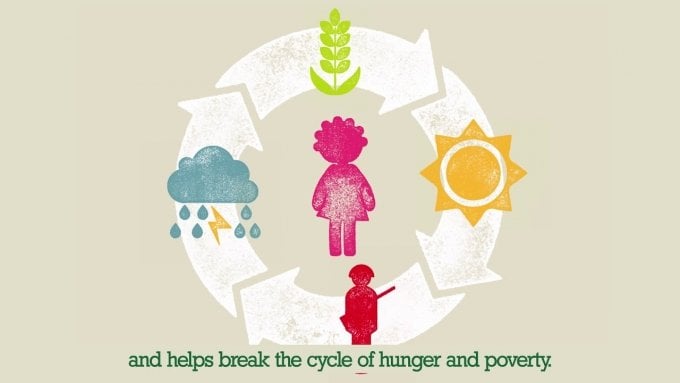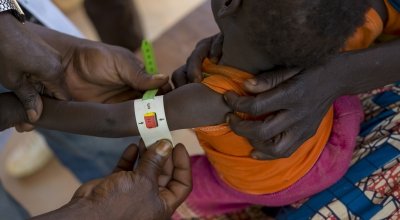
Knowledge Hub
Malnutrition is a condition that affects billions of people worldwide. It includes both undernutrition, and overnutrition. Low- and middle-income countries bear a disproportionate burden of malnutrition. The condition is inextricably linked to extreme hunger and poverty.
In the critical stages of the life cycle, i.e. childhood, adolescence, and women of reproductive age, malnutrition is responsible for a significant proportion of ill health, disease, and mortality. In this article, we look at the facts around malnutrition: what is malnutrition; what are the signs, symptoms and causes of malnutrition; who is most at risk; and, most importantly, how can we prevent it?
What is malnutrition?
Malnutrition is defined as deficiencies, imbalances, or excesses in a person’s dietary intake. It is affected by the absolute quantity but also the quality of diets.
Undernutrition is caused by not having enough to eat or having a diet that lacks proper nutrition (i.e. calories or energy, protein, or other vital vitamins and minerals), or being unable to properly absorb nutrients from the food one eats to sustain good physical health and brain potential. This type of malnutrition leads to low weight-for height (wasting), low height-for age (stunting) and low weight-for age (underweight) particularly in children. Undernutrition is a result of poor quantity and quality food intake, or frequent illness.
Overnutrition is caused by an excess of nutrients, mainly energy or calories, and results in obesity. This can result in Non-communicable diseases (NCDs) such as diabetes, cardiovascular diseases etc.
The statistics
The statistics around undernutrition are quite alarming. A report released by the United Nations in 2023 revealed that hunger afflicts one in ten people globally, now standing at 735 million people. The number of people suffering from malnutrition goes further than hunger because even if people are not necessarily suffering from hunger (resulting from an absolute lack of adequate quantities of food), they are still at risk of not having access to nutritious food. The report highlights that 2.4 billion people experienced moderate or severe food insecurity and 900 million people faced severe food insecurity. Over 3.1 billion people couldn't afford a healthy diet.
Let’s break down the facts:
- Nearly 600 million people are projected to be chronically undernourished by 2030.
- Globally, more than 735 million people do not have enough to eat.
- 2.4 billion people lack regular access to enough nutritious food.
- 148 million children under 5 years of age are stunted and 45 million are wasted. [UN]
- Nearly a third of reproductive-age women are anaemic because of undernutrition. [World Health Organization]
- Each year, around 20 million babies are born underweight. [UNICEF]
- Nearly half of all deaths in children under 5 - nearly three million child deaths worldwide - are attributable to undernutrition. [World Health Organization].
Signs and symptoms of malnutrition
The signs and symptoms of malnutrition can vary, depending on the type. The most common symptom of malnutrition – in this case, undernutrition – is unintentional weight loss, but people may also have one or several of these symptoms:
- Loss of fat and muscle mass
- Hollow cheeks and sunken eyes
- A swollen stomach
- Delayed wound healing
- Dry hair and skin
- Fatigue
- Difficulty concentrating
- Depression and anxiety
There are a number of other signs and symptoms, but these vary based on the type of malnutrition and the stage of lifecycle being affected. Hindered physical growth, compromised immunity, frequent illness, changes in intestinal mucosa, hair and skin changes, restricted brain development, weak bones, to name a few, are some other symptoms.
Undernutrition leads to serious physical growth restriction and health problems and because of this, it can increase your risk of infection and death.
Malnutrition in children
Twenty-two percent of the world’s children are too short for their age (stunted) and nearly eight percent are too thin (wasted). Fewer than one in five young children (6-24 months) are eating the basic diet they need for healthy growth. Nearly half of all deaths in children under 5 are caused by malnutrition.
This is a lot to take in, so here’s a video.
Causes
Generally, the underlying causes of malnutrition in countries suffering from extreme poverty are:
- Lack of access to adequate quantity and quality of food
- Disease
- Conflict
- Climate change
One of the predominant causes as well as consequences of malnutrition is extreme poverty. Poverty alone does not lead to malnutrition, but it seriously affects the availability of adequate amounts of nutritious food for the most vulnerable populations. Over 90 percent of malnourished people live in low- and middle-income countries.
Populations most at risk
Everyone is susceptible to malnutrition; however, the groups most at risk of malnutrition are those living in extreme poverty, children, women and girls, and the elderly. The nutritional needs of children, girls and women are higher therefore their susceptibility to malnutrition also higher. As we have seen, extreme poverty increases the risk of, and risks from, malnutrition, meaning populations living in those areas are at a higher risk. Extreme poverty and hunger is exacerbated by conflict, extreme weather-related events, fragile institutional structures, and weak international policies and proactivity. Indeed, hunger and malnourishment in conflict-affected areas only seems to show signs of worsening, with 60% of the world’s hungry now living in such countries.
Diagnosis
There are several ways to identify adults who are malnourished or at risk of malnutrition, for example. The Malnutrition Universal Screening Tool (MUST) identifies adults and especially older people who have or are at high risk of malnutrition.
Diagnosing malnutrition in children under the age of five involves measuring their weight and height and comparing it against the expected average for a child of that age. To assess wasting, medical professionals also measure a child’s mid-upper arm circumference and compare this to globally agreed thresholds.
Long-term effects
Vitamin A deficiency, Iron deficiency, and Iodine deficiency are the widely recognised public health and nutrition problems.
There are also some diseases caused by malnutrition, including:
- Scurvy: caused by lack of vitamin C scurvy is an extremely rare condition, almost exclusively caused by someone eating a completely unvaried diet. Symptoms include spongy gums, joint pain and a loosening of the teeth. Today, death by scurvy is almost unheard of.
- Rickets: brought on by a lack of vitamin D, which causes the body to be unable to absorb or deposit calcium. This affects bone development and so it is most severe in children, who can, as a result, end up with bones that flare outward in a “cupping” appearance.
- Beriberi: most common in Asian countries, is caused by the deficiency of vitamin B1. In the modern world, the most common cause is alcoholism, and can cause decreased muscle function, mental confusion, pain and paralysis.
- Pellagra: caused by lack of the vitamin B3, this disease is most common in the poorest regions of the world. It is marked by dementia, diarrhoea, and dermatitis, and if left untreated it can be fatal. Its primary prevention is an adequate diet.
Thousands of children under five die every day due to malnourishment. But the long-term effects of malnutrition in children goes beyond health. For the children who do survive, many live with the consequences that last their whole lives.
Children who suffer with malnutrition are likely to be smaller for their age, suffer physical and cognitive growth retardation, perform less well at school and be more susceptible to illness. This makes a child less able to learn and reduces the likelihood of them earning a decent income to provide for their family. This can have a devastating long-term effect on families, communities and countries.
We help provide antenatal care, nutrition and support for mums to ensure that babies get the nutrients they need.
Support our work







